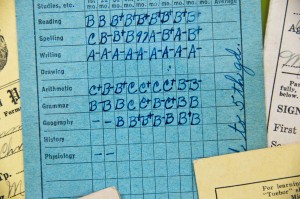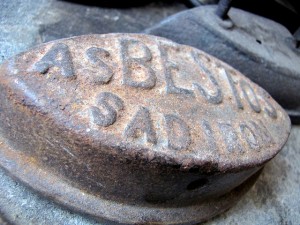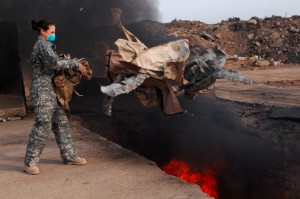This post continues my Defense Base Act Industry Report Cards series. The first post, which I uploaded last week, can be found here. To recap, the Department of Labor’s Division of Longshore and Harbor Workers’ Compensation (“DLHWC”) creates “report cards” for the large insurance carriers offering Defense Base Act insurance. The DLHWC focuses on timeliness of reporting the injury and timeliness of paying benefits. Personally, I prefer looking at this information in line graph format. As such, I took the report card information on the DLHWC’s website and rendered insurer-specific line graphs. DLHWC shares the following information on its website: The First Report data, aggregated by insurance carrier, shows the percent of reports received in the DLHWC District Offices within 30, 60, and 90 days of the date of the injury or death, or the date of the employer’s knowledge of the injury and the onset of disability, whichever isRead more
Defense Base Act Industry Report Cards – Part One
Each year, the Department of Labor’s Division of Longshore and Harbor Workers’ Compensation (“DLHWC”) creates “report cards” for the insurance carriers offering Defense Base Act insurance. Essentially, the DLHWC looks at two things: Timeliness of DBA First Reports of Injury; and Timeliness of DBA First Payments of Benefits. According to the DLHWC’s website, it adopted particular performance goals under the Government Performance Results Act to improve program effectiveness “by facilitating prompt delivery of benefits to injured workers and their families.” Keep in mind that the goal is “prompt delivery of benefits.” DLHWC shares data reported by the insurance carriers. Specifically, the DLHWC shares: The First Report data, aggregated by insurance carrier, shows the percent of reports received in the DLHWC District Offices within 30, 60, and 90 days of the date of the injury or death, or the date of the employer’s knowledge of the injury and the onset ofRead more
Who Can Diagnose Defense Base Act Medical Conditions?
Here’s a (surprisingly) not-so-simple question: who can diagnose medical conditions in Defense Base Act claims? Believe it or not, this question can throw a monkey wrench into the gears of an injured worker’s claim, particularly with psychological disorders. The rub is that, with psychological claims, the problem may actually stem from an unwritten and–as presented below–unwarranted application of law by the Division of Federal Employees Compensation (“DFEC”). Why DFEC? Because DFEC administers the War Hazards Compensation Act, the statutory scheme where the diagnosis logjam occurs most frequently. Interplay between the Defense Base Act and the War Hazards Compensation Act: Very generally, the Defense Base Act is a system of federal workers’ compensation that covers military contractors working overseas on military bases. When an employee is hurt, they file a claim for DBA benefits. Employers and insurance carriers are supposed to pay weekly compensation and medical benefits to employees with work-relatedRead more
Happy Thanksgiving!
This has been a great year. Strongpoint Law Firm has thrived because of the help and support of family, friends (new and old), and colleagues. Thank you. Happy Thanksgiving! And for the history buffs out there, here is the proclamation issued by President Abraham Lincoln on October 3, 1863, which set the precedent for America’s national day of Thanksgiving: The year that is drawing towards its close, has been filled with the blessings of fruitful fields and healthful skies. To these bounties, which are so constantly enjoyed that we are prone to forget the source from which they come, others have been added, which are of so extraordinary a nature, that they cannot fail to penetrate and soften even the heart which is habitually insensible to the ever watchful providence of Almighty God. In the midst of a civil war of unequaled magnitude and severity, which has sometimes seemed toRead more
Proving the Prima Facie Case Per the 5th Cir.’s New Decision
A new decision from the Fifth Circuit is important for Longshore and Defense Base Act cases because it explains the Section 20(a) presumption that runs in favor of claimants. Below, I first address the opinion, Ramsay Scarlett v. Director, OWCP. After that, I give my take away from the case. Ramsay Scarlett v. Dir., OWCP: The case involved an injured employee of Ramsay Scarlett & Company. The employee, Ferdinand Fabre, had worked for Ramsay Scarlet for 30 years (from 1969 to 1991). After Ramsay Scarlett, Mr. Fabre worked for Westway at the Port of Baton Rouge. Both Ramsay Scarlett and Westway were covered by the Longshore and Harbor Workers’ Compensation Act. In 2011, Mr. Fabre received an asbestosis diagnosis. The parties did not dispute the fact that Mr. Fabre was exposed to asbestos while working with Ramsay Scarlett. Accordingly, Mr. Fabre filed a claim for Longshore benefits, which he won.Read more
Use Insurance Premiums as an AWW Calculation Factor?
The value of an injured worker’s weekly compensation rate rises and falls based on the amount of the injured worker’s average weekly wage (“AWW”) at the time of injury. Consequently, litigants often argue about the worker’s AWW—especially in Defense Base Act claims. Most of the time, the argument is—in my opinion—used as a way to artificially deflate the AWW and compensation rate. Today’s post addresses a specific AWW argument that popped up in one of my cases. The issue is whether an employer and carrier may “blend” together pre-employment stateside and overseas wages to calculate the AWW of an employee who worked overseas for more than 52 weeks. I don’t think so. And perhaps a relevant factor in this inquiry should be the premiums paid by the employer to the carrier–which is a factor that some State courts look at in State workers’ compensation claims. Definition of Wages: There isRead more
New Study: PTSD, Depression and Quality of Life
Depression often goes hand-in-hand with Post Traumatic Stress Disorder (“PTSD”). And that can ruin the sufferer’s quality of life. A recent scientific study focused on Veterans with comorbid Depression and PTSD. The report, entitled Impact of comorbid depression on quality of life in male combat Veterans with posttraumatic stress disorder, is based on a “large meta-analysis composed of 57 studies, across both military and civilian samples.” What did the researchers find? That there is a comorbitiy rate of 52% for Veterans with PTSD and depression. That’s pretty high. There isn’t a definitive explanation for the high prevalence of depression with PTSD. But, “[r]esearch has shown that PTSD has a deleterious impact on Veteran life quality, as Veterans with PTSD report increased rate of unemployment due to disability, decreased social and occupation-related functioning, and lower life satisfaction.” More information can be found through the embedded hyperlink (see above). But, here isRead more
Go Get Scannable
Go download the Scannable app. Or any smart phone scanning app. It will make your Longshore or Defense Base Act case a lot easier. For this post, I am going to talk about Scannable because that is the scanning app I use. Scannable (by Evernote) uses your phone’s camera to snap photos of documents, receipts, business cards…anything that is printed. The program converts the photo to a PDF (if you want). From there, you can save, send, or e-mail the document as you see fit. One of Scannable’s best features is that, once activated, the app will automatically take the scanning photo and crop the document. Done and done. How will this be helpful for your Longshore or Defense Base Act case? Think about your last doctor’s visit. Perhaps the doctor’s office handed you a medical report or script as you exited the building. You can use Scannable to instantlyRead more
Reminder: Support Burn Pit Legislation
Consider this a call to action. There is a burn pit bill at the House of Representatives that needs your support. Contact your local representative and express your support for H.R. 2237, the “Helping Veterans Exposed to Burn Pits Act.” Also, sign the petition to the United States House of Representatives (available through the embedded hyperlink). Congresswoman Elizabeth Etsy introduced the bill for herself and for Congressman Jim McDermott. Additional congressional supporters are starting to emerge. As of now, the Library of Congress’s THOMAS website shows that “Helping Veterans Exposed to Burn Pits Act” is sponsored by Representatives Etsy and cosponsored by Representatives McDermott, Cheri Bustos, Mike Coffman, Henry Cuellar, Walter Jones, Jr., Peter King, and Aumua Amata Coleman Radewagen. What Does the Act Do? The Burn Pit Act (in short) promotes and finances research that will evaluate the negative long term health effects of burn pits in Afghanistan andRead more
Fed Ct: Must Prove Business Relationship to Enjoy Exclusivity
In a new case out of the United States District Court for the Northern District of Illinois, an airline has a big problem on its hands: it is likely going to have to defend itself in a State civil court negligence and wrongful death lawsuit. On April 29, 2013, a plane crashed immediately after taking off from Bagram Airfield in Afghanistan. Video of the dramatic crash was captured on a dashboard camera. All seven crewmembers aboard the aircraft were killed. The families of five of those crewmembers filed a lawsuit in Illinois state court against The Boeing Company, AAR Manufacturing d/b/a Telair International, Inc., Telair International, GMbH, and National Air Cargo, Inc. (“NAC”). In response, NAC removed the case to federal court asserting federal officer jurisdiction. For purposes of this post, I note that NAC argued that it had a potential defense to liability under the Defense Base Act. TheRead more
- « Previous Page
- 1
- …
- 9
- 10
- 11
- 12
- 13
- …
- 39
- Next Page »










